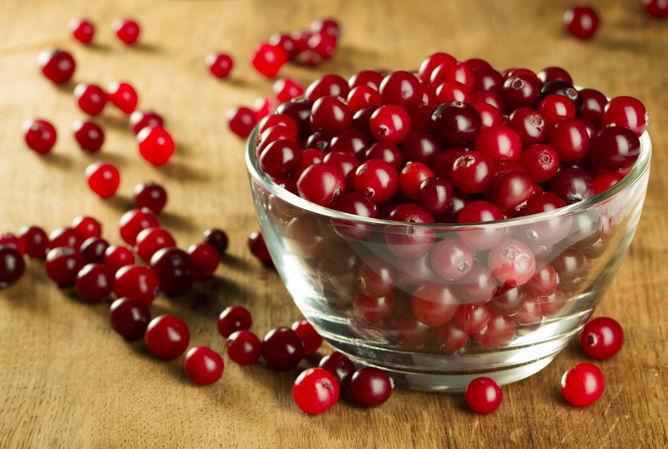Guest post by Amy Baker Joyce, MS, RD, LD, CNSC. Courtesy of the Maine Academy of Nutrition and Dietetics.
Thanksgiving is right around the corner, and who doesn’t love that dollop of cranberry sweetness next to their turkey, right? Cranberries and cranberry products, like juice, jelly, and sauce, are very popular and very common in the United States, particularly at this time of year.
Unfortunately, a pesky infection is also very common. A urinary tract infection (commonly known as a “UTI.”) More than 50% of women will have at least one UTI in their lifetimes. Anyone who has suffered from one can attest to how miserable it can be.
Many of us have heard that drinking cranberry juice can be helpful for both preventing and treating a UTI. But does it really work and how much does it take? Let’s take a look.
Following the 2008 updated Cochrane review, most health professionals would have been justified in recommending cranberries or cranberry juice — for the prevention of urinary tract infections. (Cochrane is a global independent network that reviews medical research. The network includes researchers, professionals and patients.)
The evidence showed that a substance in cranberries (and also in blueberries) appeared to prevent bacteria from sticking to the cells that line the bladder. As for the treatment of a UTI, there were not enough well-designed human studies to make that recommendation.
An updated Cochrane review, which included 24 cranberry/UTI studies published in 2012, suggests that “cranberry juice is less effective than previously indicated.” The report’s bottom line: Cranberries may be helpful for UTIs in certain people (e.g., women with recurrent infections) but overall, in contrast with the 2008 study, there was not enough strong evidence to recommend them for UTI prevention
A new European study published in 2015 looked at whether whole cranberry fruit powder could prevent recurrent UTIs in women. The results showed that the powder (which contains the peel, seeds and pulp) might reduce the risk of infections in these women with a history of recurrent UTIs. However, there are additional complications with supplements because they are not FDA-regulated. That makes it difficult to obtain standardized products that ensure potency and contain enough of the “active ingredient.” The research in this area appears positive, but more is needed.
So should you skip this folk remedy altogether? Cranberries and their juice might be beneficial and the risk of any harm would generally be low. Before you run out and buy some, you should consider a few things:
- It is generally advisable to drink “unsweetened 100% cranberry juice.” Unfortunately, it’s tart and also expensive.
- The average cranberry juice beverage (not 100% juice) contains 110 calories per 8 ounces, which can be an issue if you are watching your weight. Even worse, these calories come primarily from sugar (about 28 grams per 8 ounces).
- If you want to try cranberry supplements, remember that their contents can vary in potency. Cranberry supplements may also interact with some medications.
In any case, if you enjoy cranberries and cranberry juice, by all means feel free to include them in your diet often—and certainly make your dinner complete with some whole berry cranberry sauce! As a registered dietitian, I recommend that you make your own sauce at home. You can modify the recipe to decrease the amount of sugar. You don’t need all the sugar if you replace some of the water with freshly squeezed orange juice. Add some orange zest and a bit of cinnamon for added flavor. Happy Thanksgiving!
This guest post was written by Amy Baker Joyce, MS, RD, LD, CNSC. Courtesy of the Maine Academy of Nutrition and Dietetics.


Leave A Comment